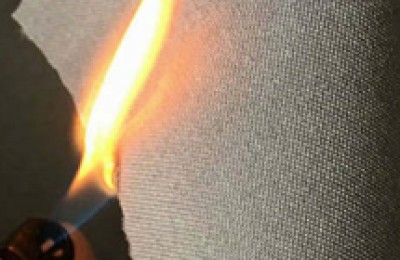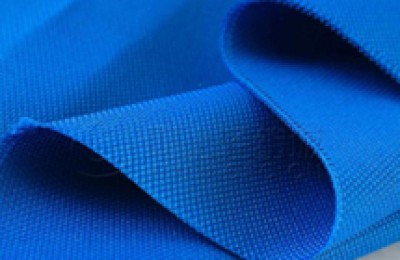Cellulose acetate, the English name is cellulose acetate, or CA for short. Acetate fiber is divided into diacetate fiber and triacetate fiber, which is a type of man-made fiber. Chemical fibers are made from cellulose as raw material and converted into cellulose acetate through chemical synthesis. First prepared in 1865, it is an acetate ester of cellulose. A thermoplastic resin obtained by esterifying cellulose with acetic acid or acetic anhydride under the action of a catalyst. It is a chemically modified natural polymer obtained by esterifying the hydroxyl groups in the cellulose molecule with acetic acid. Its properties depend on the degree of acetylation.
01. Classification of cellulose acetate
According to the degree of substitution of hydroxyl groups by acetyl groups in cellulose, Divided into diacetate fiber and triacetate fiber.
Diacetate is formed after partial hydrolysis of type 1 acetate, and its degree of esterification is lower than that of triacetate. Therefore, the heating performance is not as good as that of trivinegar, the dyeing performance is better than that of trivinegar, and the moisture absorption rate is higher than that of trivinegar.
Triacetate is a type of acetate that does not undergo hydrolysis and has a high degree of esterification. Therefore, it has strong light and heat resistance, poor dyeing performance, and low moisture absorption rate (also called moisture regain).
In the molecular structure of cellulose acetate, the hydroxyl group on the glucose ring of cellulose is replaced by an acetyl group to form an ester bond. The degree of esterification of cellulose diacetate is lower than that of cellulose acetate due to hydrolysis. Triacetate. The supramolecular structure of diacetate fiber has a larger amorphous area, while triacetate fiber has a certain crystalline structure, and the symmetry, regularity, and crystallinity of the fiber macromolecules are higher than those of diacetate fiber.
02. Structure of acetate fiber
Longitudinal fiber surface morphology Smooth, relatively uniform, with obvious grooves; as can be seen from its cross-sectional shape, the fiber has no skin-core structure and is in the shape of a clover leaf, with a relatively smooth periphery and few shallow serrations.
03. Properties of acetate fiber
Chemical properties
1. Alkali resistance
Weak alkaline alkaline agents basically do not cause damage to acetate fiber, and the fiber weight loss rate is very small. After encountering strong alkali, especially diacetate fiber, it is prone to deacetylation, resulting in weight loss, strength and modulus. Therefore, the pH value of the solution used to treat cellulose acetate should not exceed 7.0. Under standard washing conditions, it has strong resistance to chlorine bleaching and can also be used for dry cleaning with perchlorethylene.
2. Resistance to organic solvents
Acetate fiber is completely resistant to acetone, DMF, and glacial acetic acid. Soluble, but not soluble in ethanol and tetrachlorethylene. Based on these characteristics, acetone can be used as a spinning solvent for acetate fiber, and tetrachlorethylene can be used for dry cleaning of acetate fiber fabric.
3. Acid resistance
Acetate fiber has good acid resistance and stability. Common sulfuric acid, Hydrochloric acid and nitric acid will not affect the strength, gloss and elongation of fibers within a certain concentration range; however, they can be dissolved in concentrated sulfuric acid, concentrated hydrochloric acid and concentrated nitric acid.
4. Dyeability
Although acetate fiber is derived from cellulose, it undergoes the esterification process In fiber, a large part of the polar hydroxyl groups on the glucose ring of cellulose are replaced by acetyl groups to form esters. Therefore, dyes commonly used for dyeing cellulose fibers have almost no affinity for acetate fiber and are difficult to dye. The most suitable dyes for acetate fibers are disperse dyes with low molecular weight and similar dye uptake rates.
The acetate fiber or fabric dyed with disperse dyes has bright and bright colors, good level dyeing effect, high dye absorption rate, high color fastness, and complete chromatography.
Physical properties
1. Acetate fiber not only has a certain degree of water absorption, but also has the ability to absorb water after absorbing water. Fast removal performance;
2. The thermal stability of acetate fiber is good, the glass transition temperature of the fiber is around 185 ℃, and the melting termination temperature is around 310 ℃. At the end, the weight loss rate of the fiber is 90.78%; the breaking strength of acetate fiber is 1.29 cN/dtex, and the strain is 31.44%;
3. The density of acetate fiber is higher than that of viscose The fiber is smaller, closer to polyester; the strength is the lowest among the three fibers;
4. The elasticity of acetate fiber is relatively good, similar to silk and wool;
5. The shrinkage rate of boiling water is low, but high temperature treatment will affect the strength and gloss of the fiber, so the temperature should not exceed 85 ℃.
Is acetate fabric comfortable to wear?
1. Divinegar has good breathability and antistatic properties
Inanenvironmentwitharelativehumidityof65%,diacetylvinegarhasthesamepropertiesascotton.Ithasgoodhygroscopicityandbetterquick-dryingperformancethancotton,soitcanabsorbtheevaporatedwatervaporfromthehumanbodywellanddischargeitwellatthesametime.Thusmakingpeoplefeelcomfortable.Atthesametime,goodmoistureabsorptionpropertiescanreducetheaccumulationofstaticelectricityandmakeitlesslikelytoproducestaticelectricity.
2.Secondvinegarhasasofttouch
△Fiber Initial modulus chart
The initial modulus is low, and the fiber is weakly rigid and easy to bend under a slight load, showing a soft shape, thus giving the skin a smooth, soft and comfortable feel. But if the initial modulus is too low, it will appear weak.
The initial modulus is high, and the fiber has strong rigidity and is not easy to bend under a small load, showing a stiff character.
3. Divinegar has outstanding deodorizing performance
△Comparison chart of deodorizing performance of diacetyl vinegar, cupro, cotton and polyester
△Comparison chart of deodorizing performance of diacetyl vinegar, cupro, cotton and polyester (2)
Why does acetate fiber fabric have a good appearance?
1. Divinegar has a pearl-like soft luster
△The structure of mulberry silk, acetate fiber and polyester
The cross-section of mulberry silk is irregularly triangular, and the cross-section of acetate fiber is irregularly concave and convex. The longitudinal sections of both have longitudinal stripes, making the transverse light diffuse and the longitudinal light also diffuse. Diffuse reflection. The refractive index is lower, 1.48. Therefore, mulberry silk has a pearl-like soft luster.
2. Acetate fiber has excellent drapeability
The initial modulus of the fiber is 30-45cn/dtex, the rigidity is weak, and the cross-section The irregular concave and convex fabric is soft and has good drape
3. The diacetyl vinegar has bright and bright colors and color fastness
△Comparison chart of color fastness of each fiber in saturated color (grade)
The color of acetate fiber has complete color spectrum, full and pure color, and excellent color fastness .
4. Acetate fiber has good dimensional stability
Acetate fiber has low swelling capacity to moisture, so it has good dimensional stability after being made into fabrics and maintains its appearance when worn.
5. Divinegar has relatively balanced antifouling properties
It is resistant to dirt, water-based and oil-based stains and easy to clean. </p








